6 Best Types of Pine Trees In Illinois (Plant, Grow or Admire)
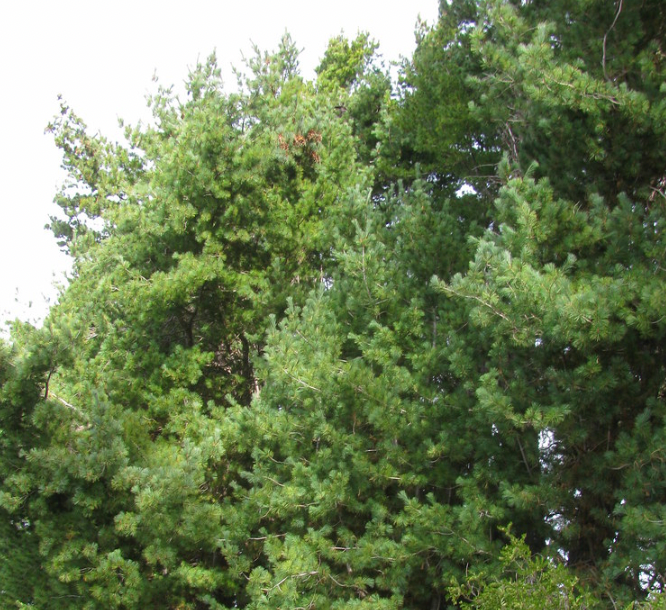
There are many different types of pine trees that grow in Illinois. The state spans USDA zones 5a - 7a, so the pine tree species that grow up there have to be extremely hardy. Here's a few of them...
Table of Contents
Best Types of Pine Trees That Grow In Illinois
Illinois has 140+ state parks and natural areas so it's home to a ton of different trees. Some of those trees are, you guessed it, pine trees.
Pine trees can grow all over the state of Illinois, it just depends on their ability to grow in what hardiness zone. Check out the eight varieties of pine trees that grow in Illinois.
White Pine (Pinus strobus)
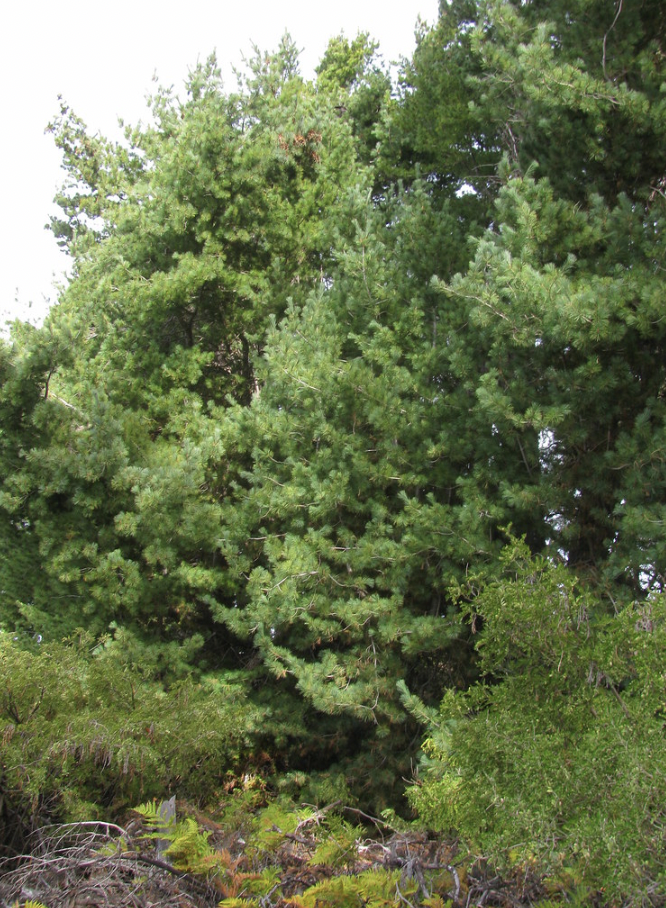
Photo Credit: Forest and Kim Starr
Other common names: Eastern White Pine, Northern White Pine, Weymouth Pine
Growing zones: 3 - 8
Average Mature size: 75 - 200 ft. tall
White pines are massive trees that can grow anywhere from 75 to 200 feet in height outdoors. These used to be the most important tree in the Northeast because of how loved they were for construction, pulpwood and millwork. It's no wonder it's the state tree of Maine.
This pine tree is a little less resistant than the Eastern red cedar as it only grows to Zone 8 but that still means it can grow across Illinois. They love moist but well-drained soils which means you won't find these trees down south. The soil is just too loose for the white pine to grow in.
The white pine tree has up to 8 in. cones and a long straight trunk. When they're younger, they resemble a pyramid shape but once they mature, they'll have a crown of horizontal branches.
Fun fact: the white pine tree (pinus strobus) is a popular variety for Christmas tree farms.
Virginia Pine (Pinus virginiana)
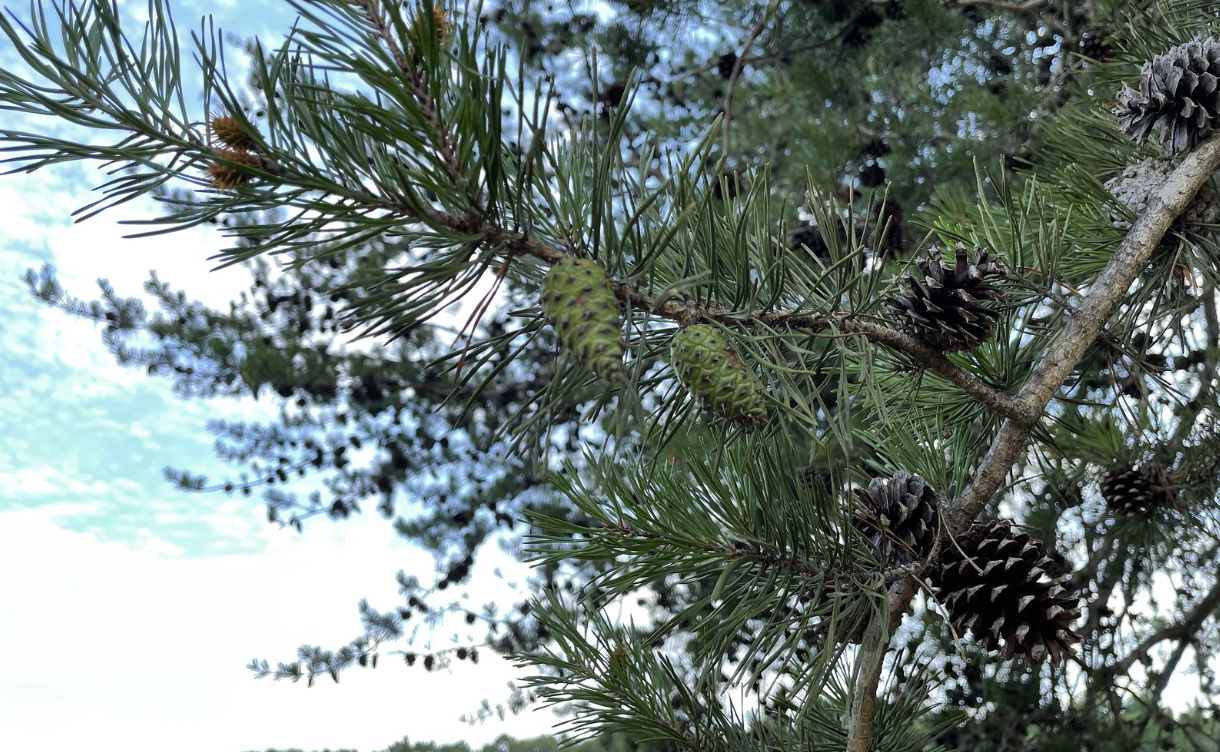
Photo Credit: Matt Borden
Other common names: Virginia Pine, Jersey Pine, Scrub Pine
Growing zones: 4 - 8
Average Mature size: 40 to 50 ft. tall
The flat-topped and scraggly Virginia pine native to Virginia also finds a home in the colder parts of Illinois. Growing in USDA zones 4 to 8, you can find these trees pretty much throughout Illinois where the soil is poor and well-drained.
The Virginia pine tree is typically used as lumber and its hardier than most pine trees. Another pine tree that likes full sunlight, these small to medium evergreens look pretty good on an open landscape.
Be sure to check this little needled evergreen tree out as it has a unique appearance uncommon amongst its family members.
Pitch Pine (Pinus Rigida)
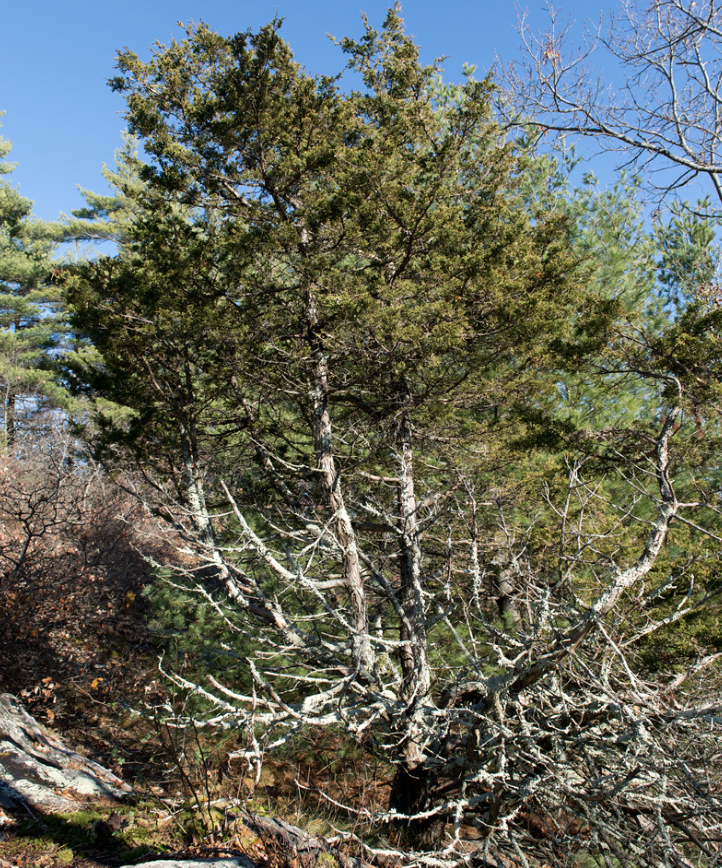
Photo Credit: Plant Image Library
Other common names: Torch Pine
Growing zones: 4 to 7
Average Mature size: 70 ft. tall
Growing up to 70 feet in height, the Pitch pine is a medium-sized evergreen that can grow across most of Illinois. It has a unique appearance having reddish brown and scaly bark with twisted branches that are often gnarled and droopy.
Pitch pines can grow in dry and rocky soil. Its twigs, leads, and seeds are often consumed by the local wildlife, including (but not limited to) the pine-devil moth.
The pitch pine is yet another pine that loves full sunlight and more acidic soil. It blooms green in the spring months of March, April, and May. The cones on the tree can grow in groups of 3 to 5. If you need to trim these, be sure to get out your best set of tree loppers.
Fun fact. While Pitch pines were once used as a source for resin, they are now used mainly as a source for lumber and pulpwood.
Jack Pine (Pinus banksiana)
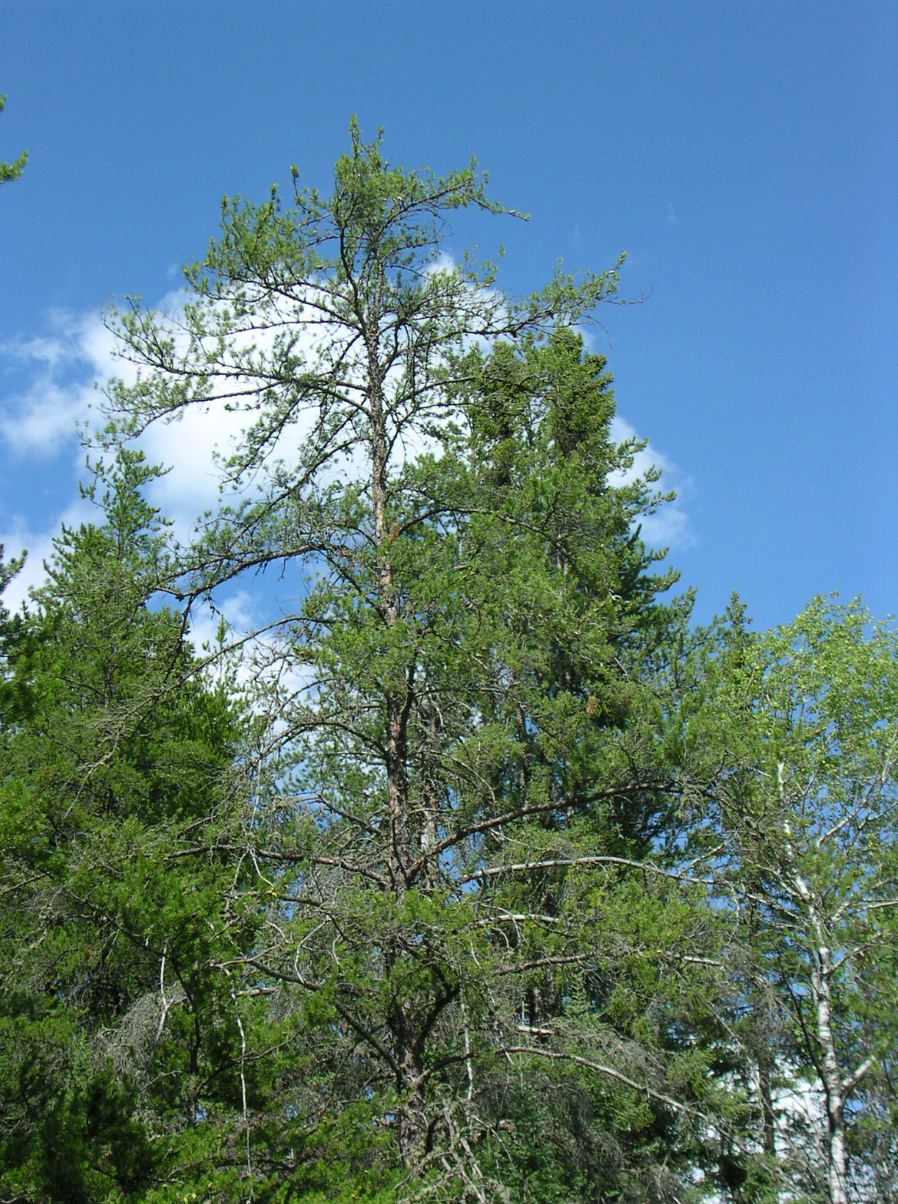
Photo Credit: Superior National Forest
Other common names: Gray Pine, Scrub Pine
Growing zones: 2 to 7
Average Mature size: 50 - 75 ft. tall
We love the scientific name for the Jack Pine: Pinus banksiana. It's like a combination between banks and Louisiana. Anyways...
Jack Pine trees are a unique evergreen because they are sometimes conical and sometimes flat-topped. They like sandy and loamy soils but can even grow in some soils that lack nutritional value.
People with sensitive skin should avoid the wood, sawdust, and resins of these trees because they can cause dermatitis. If you want a strange-looking tree for whatever reason, the Jack Pine makes a good selection.
Red Pine (Pinus resinosa)
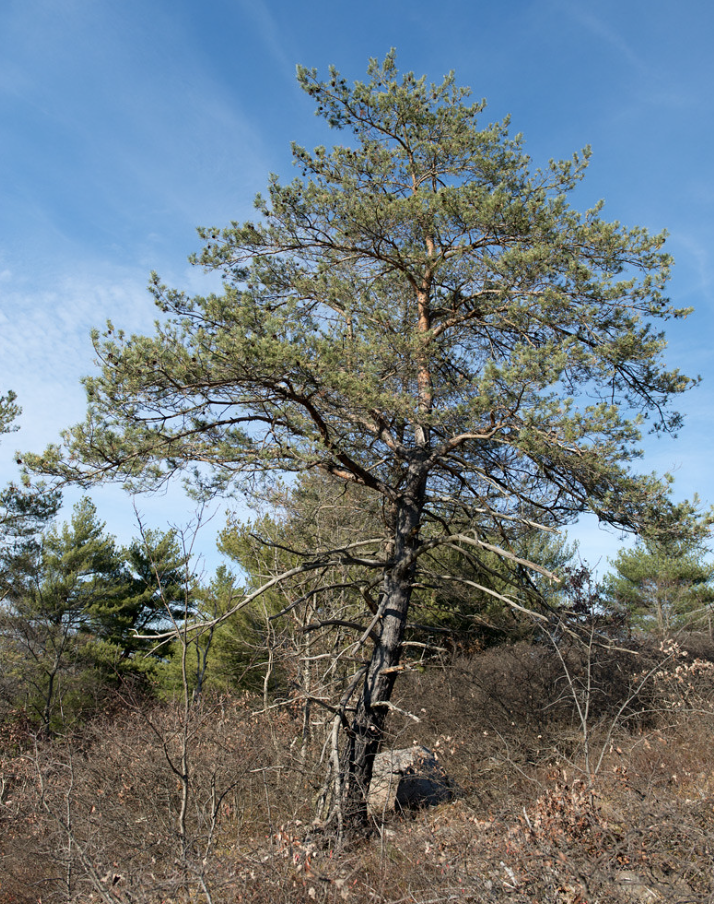
Photo Credit: Plant Image Library
Other common names: Norway Pine, Canadian Pine
Growing zones: 3 to 6
Average Mature size: 50 to 75 ft. tall, but can grow up to 125 ft. or more
The Red Pine tree is another cold hardy evergreen that grows in USDA zones 3 to 6. You won't be able to find these in the southern part of Illinois. These trees prefer to grow in dry, loose, and sandy soil but are extremely cold-hardy that strive in full sun.
Its attractive dark green color often lures songbirds onto its pine cones but also certain insects such as the northern pine sphinx which may use the tree to lay its larvae.
Red pine trees are particularly useful because of how their hardwood absorbs preservatives. That means it can be used in bridges, structural beams, and other construction.
Red pines are susceptible to a lot of pests and diseases so they are not recommended for growing on regular landscapes. Some birds aren't meant to be caged as they say... except for trees.
Shortleaf Pine (Pinus echinata)
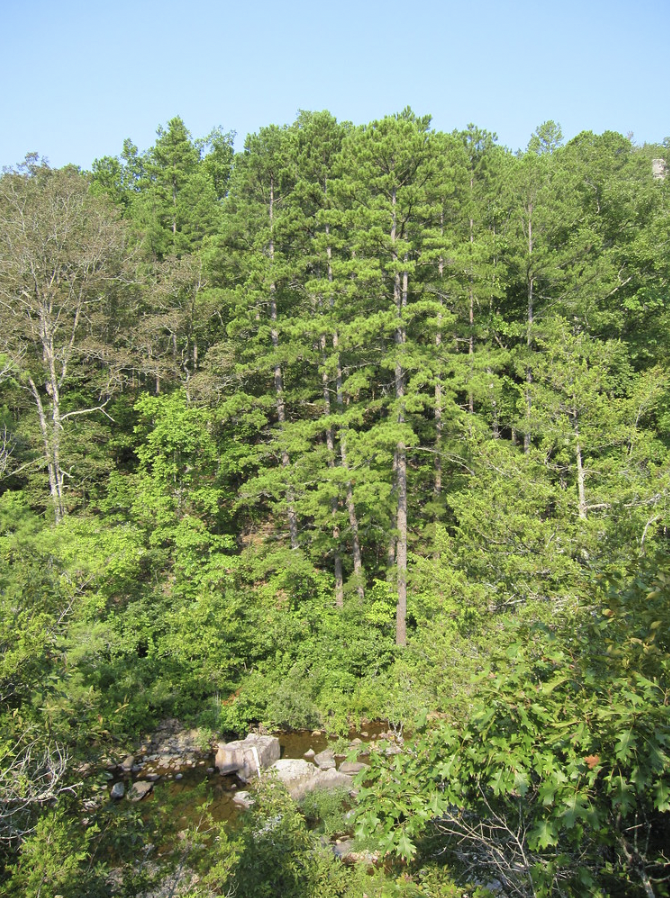
Photo Credit: Chris M. Morris
Other common names: Arkansas Pine, Longtag Pine, Oldfield Pine,
Growing zones: 6 to 9
Average Mature size: 130 ft. tall
The Shortleaf Pine tree is an absolutely massive evergreen tree that can grow up to 130 ft. tall. It's one of the most widely distributed southern yellow pine trees native to 21 southeastern states.
Given its USDA planting zone of 6 to 9, these are one of the only pine trees found in the southern part of Illinois. But just because it grows in warmer climes doesn't mean it isn't hardy. In fact, it's one of the hardiest of the southern pine trees, and it's extremely drought tolerant.
The Shortleaf Pine blooms into its yellow color in February and March, and it produces reddish-brown fruit. Another wonderful pine tree that enjoys dry and sandy soil but partial shade from the sun.
Growing Pine Trees In Illinois
If you are an Illinois landscaper or just an admirer who wants to plant pine trees, you now know eight more varieties that you could potentially grow or see in Illinois. Cutting tree branches shouldn't be considerably different from species to species.
If you live here, we hope we gave you a good amount of options to consider planting or just checking out on travels across the state. If you are just passing through, try to take a look at the sweet variety of pines that grow here.
Pine trees are not too difficult. Most of them are very-well tolerant of various soil conditions and pretty much all of them like sunnier days. The terrain in Illinois varies.
You have swamps and other waterways down in the southern part of the state, you have caves and forests over to the western part, and finally, tall grass prairies that grow up North. Not only is Illinois home to many species of pines, but it's also a hole too many different types of terrain.
Last but not least: songbirds love sitting in and nesting on pine trees. If you live around some pine trees, you can expect to hear the birds sing.
If you liked this article on pine trees, be sure to check out some of our other guides like oak trees in Massachusetts. We hope to have all sorts of tree guides to cover the entire continental US.
FAQs

Christina Hernandez
Christina has done most of her research on environmental science but recently has changed her focus towards sustainable forestry. She has a passion for the outdoors and wants to spread that passion to the world.
Join our community!
Join to receive guides, insights, and the latest gardening deals!
